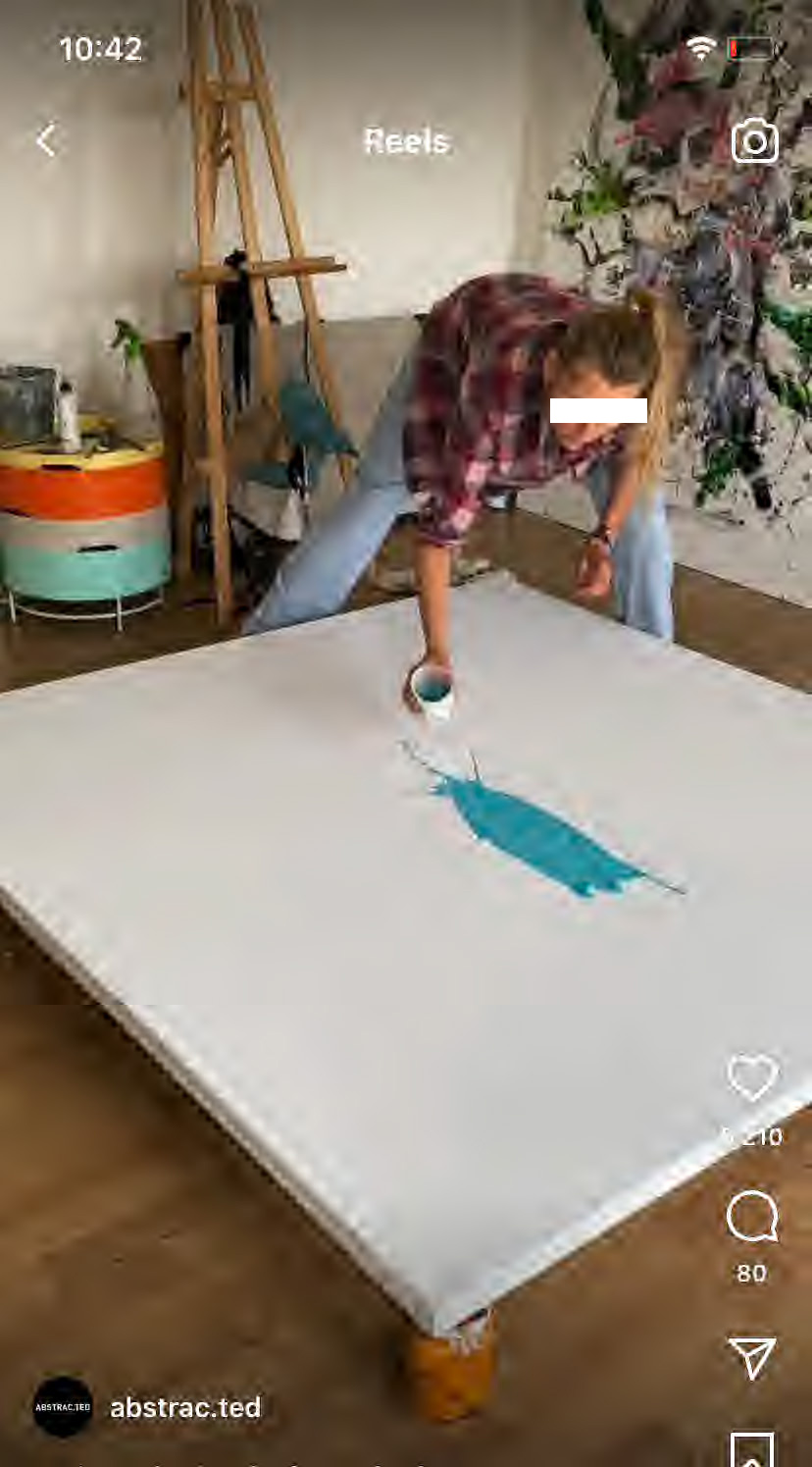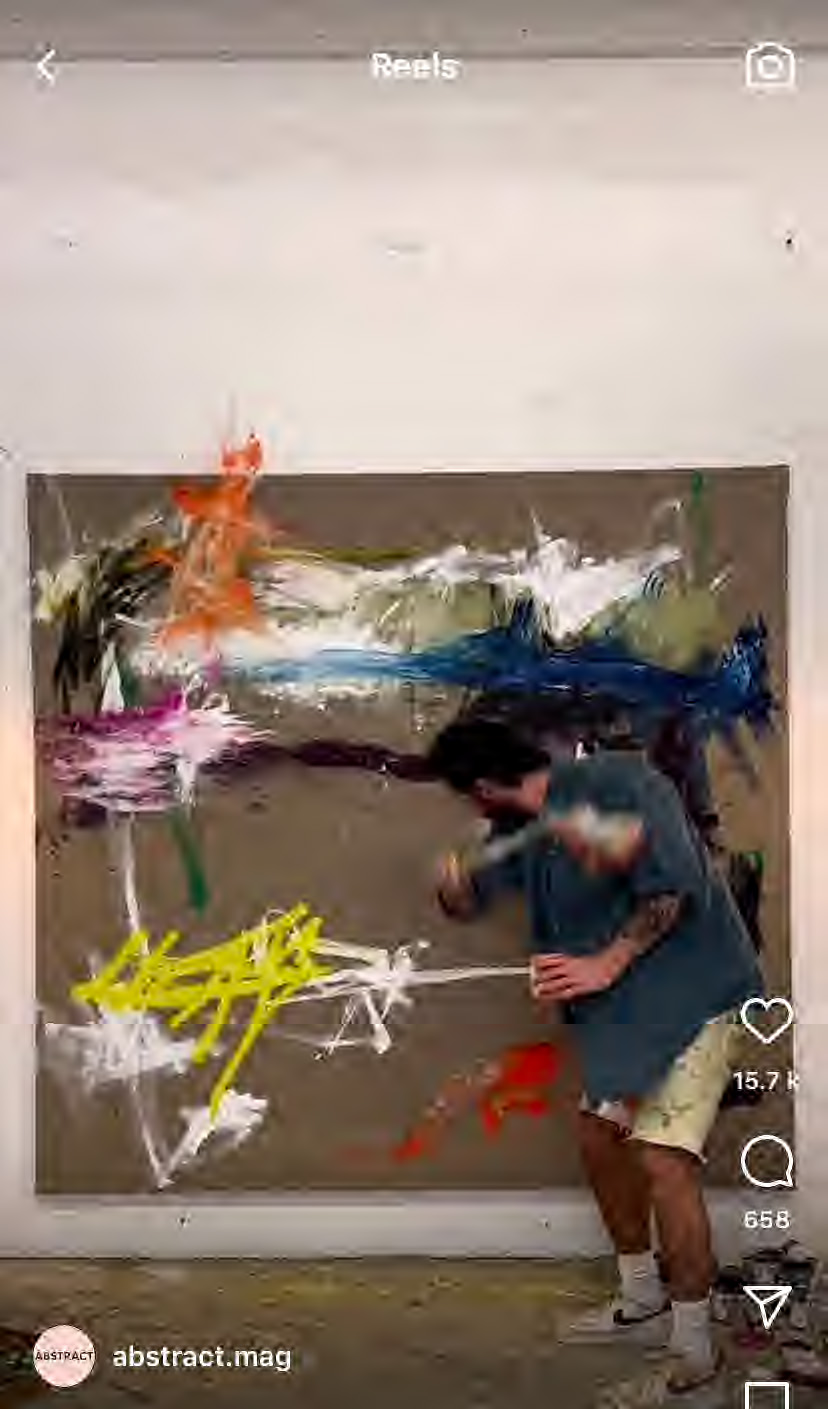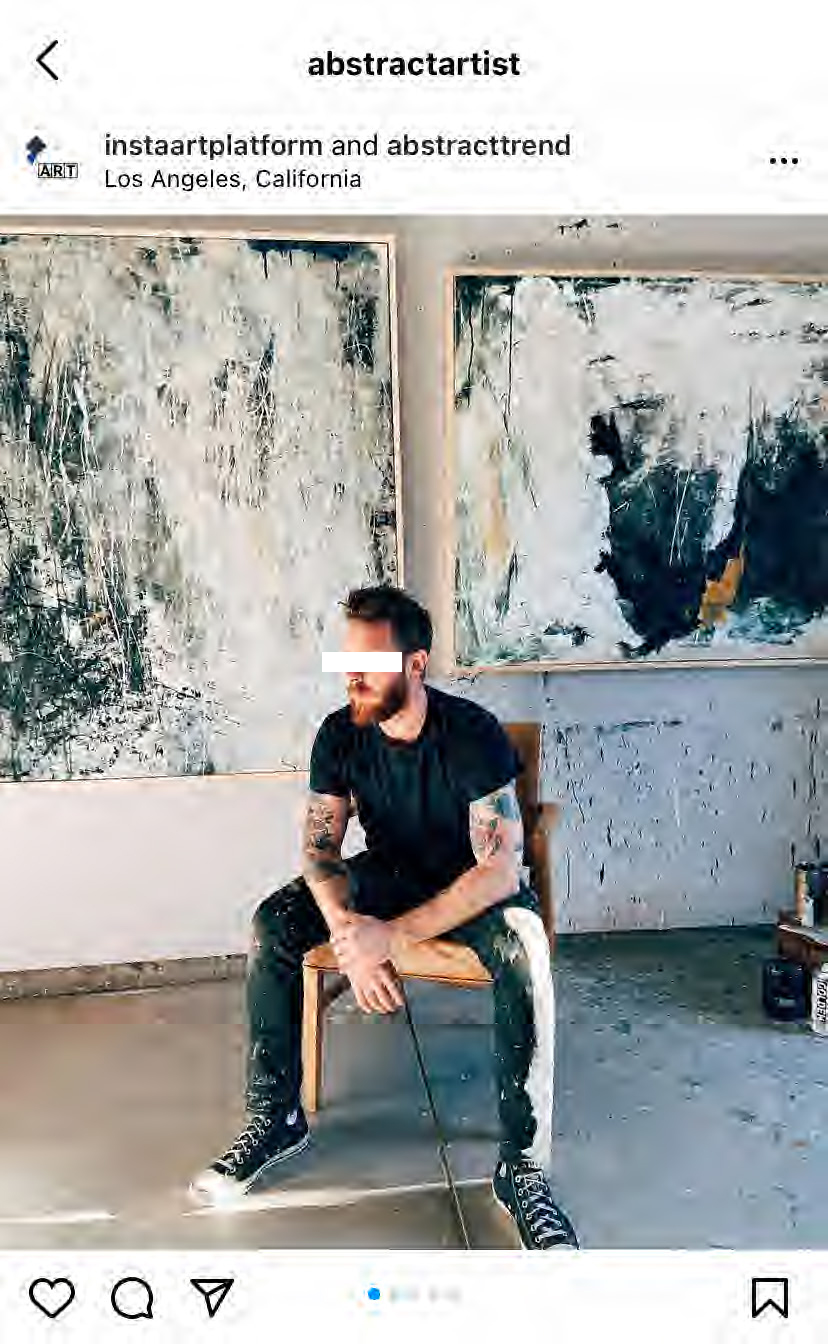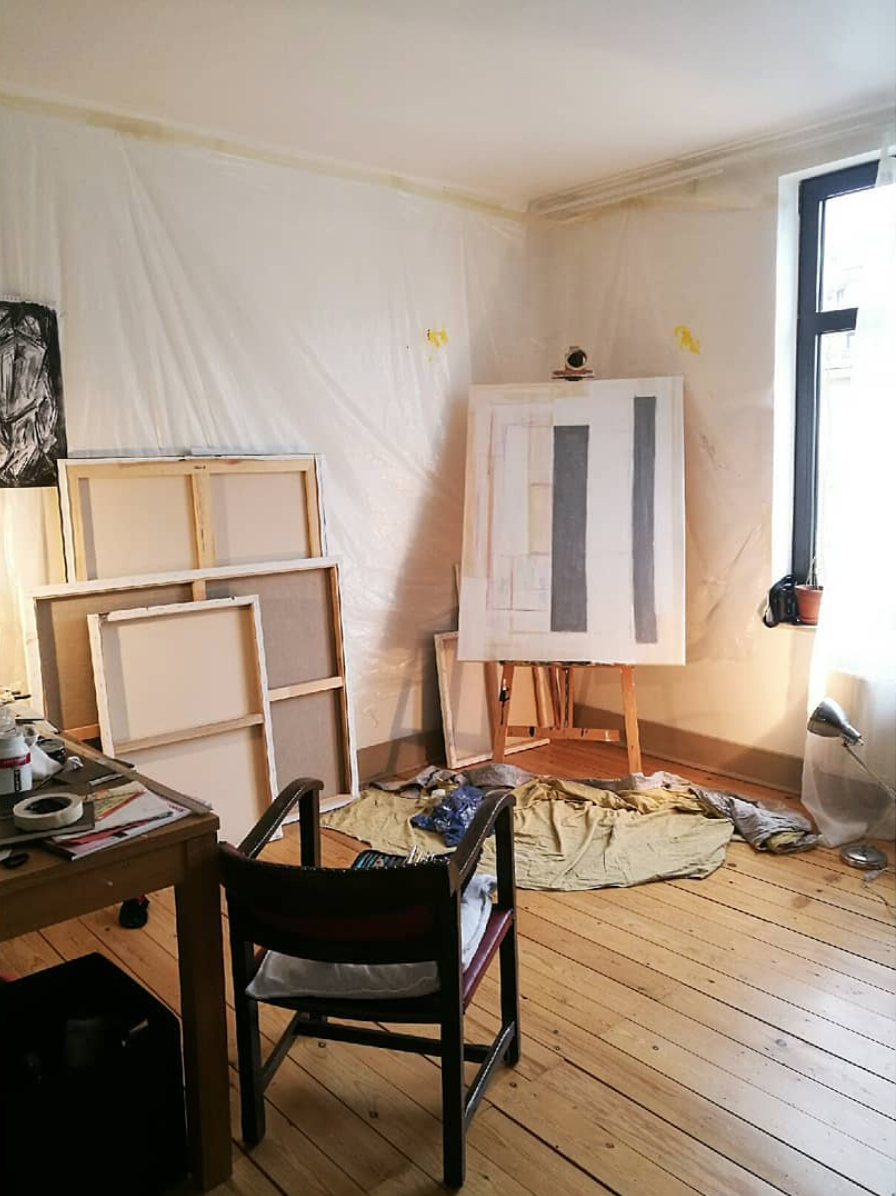This has played on my mind for years but it’s easy to avoid when you’re inside it. How has publishing work on Instagram harmfully closed the loop on truly exposing one’s artwork?
Creativity is a motivation-motivated occupation. The drive to make comes itself from a deep motivation. That motivation is inspiration. The spark as it’s sometimes known. One inspiration is the drive, simply to create in itself. The second is to realise an idea; i.e. to bring it forth from the mind and into the real world. The third is the desire to have it seen, appreciated and confirmed by other human beings.
Prior to having the ability to instantaneously place an image of my work, (and remember this point because it is merely an image), the passage to have the paintings and sculptures I created interacted with, still seemed straightforward.
There was no need to replace this route with a digital version. I didn’t yearn for any easier way for eyes to fall upon what I had made. I simply accepted that once it had been made, it existed, and I would bring it out into the world physically in whatever way was appropriate to the work and to where I was. Instinctively, this was done in a more motivated way. I have this art – this is where it belongs.
We’ve all had websites for many years yes, but these acted as more of a portfolio or index of accomplishments rather than a medium for accomplishment itself. I only discovered this need for a website by meeting people in public, whilst out with my sketchbook or at an event and finding the necessity to be able share my larger body of work with them. But now the idea of even having a website seems frustrating and basically ineffectual.
So how did we get here?

For a long time now, I’ve been aware that after I have published my work on Instagram, made it available on other tiny screens through my tiny screen, I felt it was done. Great! It was out and whatever reaction occurred was in a way the final part of this piece coming to be. I believe this is wrong and dangerous. You may deny it but I think so many artists must subconsciously feel this. Yes, we still want to exhibit and to sell but the stimulation more often than not ends there. Worse than that, the reaction each piece received in this digital space would actually guide the next work made!
Likes. Doesn’t the word even sound poisonous now. Why would my creative practice, the most pure and for me crucial expression of my intellect and self be guided by a binary trigger built into a game? I think the thing we should be considering here is how ideas interact with neurological reward mechanisms.

The notion of dopamine addiction with regards to apps and particularly Instagram is not a new discussion. But what is too often ignored is the interplay between these minute hormone pulses and the loops which drive creative behaviour. Reward mechanisms are integral to creativity. It’s such a fragile and fleeting thing to see a project or even its first step clearly in the mind. It’s important to run with it and bring it forth quickly and without other, what you might call, mental pollution. I myself discovered the reason why I never realised so many fantastic ideas was that I loved talking about them as soon as I had them. You would think inspired conversation about potential work would give it momentum, and make it more robust but in actual fact this removes the most important part of it.
The inspiration associated with discovery.
When a thought is described in detail, especially if the entire context is imagined and explained, the mind can’t actually tell the difference between this hypothetical existence and if the senses have witnessed it. Immediately the reward mechanism is triggered. This is why it often feels so good to shout out your ideas to friends and colleagues over a beer. The dopamine is released, the loop is closed. Essentially the initial idea dies then and there.
I think this problem must be inherently involved with digital publication. Sharing as we so flippantly call it. The piece is photographed, tweaked, tagged and shared. We get that feeling of creative accomplishment having seen an idea through to completion and sent it out. Shared with the whole waiting world!
But sadly, this isn’t the case. The spread of your broadcast is ever shrinking. The response is small. Your painting is on the easel. Where does our energy go then? We ask ourselves, How do other people get better responses?
It changes yearly on this platform; always striving for more engagement and more absorption of content and thus more advertising and personal data to be mined and sold. Now it’s Instagram reels. Or was that last year perhaps? What gets the most hits with art-related tags seems to be short studio videos. Notice how little the actual work gets attention here. This doesn’t really come as a surprise. People have always been more interested generally in artists, and the supposedly romantic lifestyles they live, than artwork itself. So artists spend ever more time filming themselves in the studio.

This isn’t making art. This is making content. It’s orchestrated and you are losing yourself doing it. I read articles and talk to friends arguing the pros and cons of this time spent. If what you’re looking for are these binary interactions then maybe it is worthwhile for your practice but try and remember this simple question.
Who do you want to see your work?
Really though, why are you making it and who is it for? Because I guarantee nine hundred and ninety-nine out of a thousand times your work is viewed on Instagram it’s not by appreciators of art and it’s not buyers. Even if those people do love art and do buy art, whilst they’re on instagram they are app users. They are gamers and so are you. It’s in Instagram’s interest to reduce life to bite-sized easily swallowed pieces. But does it really aid your passion to be snacked on in between ads for nutritional shakes and cat toys? Can your art even really fit on any screen?
The problem with this debate is that it swiftly turns into – well what platform should I use instead? What platform indeed. There’s many more places online to share your work and receive very constructive feedback. These environments are certainly less fickle and toxic but we as artists need to ask ourselves a tough question here. What have we lost by sharing online?
I fantasise about racing to the roof of my building, throwing my phone to smash on the pavement and pouring multi-coloured paint down the whole facade. Something, anything real and energetic away from slaving to this postage stamp reality which steals our gaze. I’m sure if I did I’d be all over Instagram tomorrow.


